I like to think my home is well maintained. No leaks, no drips, the faucets all work correctly, the appliances are newer, the toilets have been replaced with water saving ones… I care about my home and so I like to keep up with the maintenance.
So imagine my surprise, when a couple nights ago, I heard the water running. Lots of water. Spraying. Inside the house. What the heck?
I’m really happy that I was home, because if I hadn’t been able to catch it and shut it off, there would have been a flood. A really BAD flood. So what happened?
My house was built in the mid-1980 era, and it has copper wiring, copper plumbing, the usual conveniences. In a copper-piped house, the sink faucets and toilets and such are attached to the water supply using a shut off valve. In the 80’s and 90’s,many of these valves were all one piece, with an attached metal hose than runs from the valve to the toilet (or faucet.) Most, if not all of these are multiple turn valves, ie. you have to turn the valve handle around a bunch of times to get the water to shut off.
Modern examples of the same thing are quarter turn – and while you can get them with an attached hose, most of them are just the valve. The multi-turn valves are prone to leaking, the quarter-turn ones are supposed to be better.
Here’s an example of the old style:
These are multi-turn, and the hose that is attached is a flexible buy ambien online forum metal. This type of hose is far more durable than the newer rubber hose covered with metal braid – those have a 100% failure rate in certain applications – but that’s not the issue. The issue here is the plastic end:
If you look close, you can see that the plastic end has failed. Here’s a better picture:
Yep, that is what happened a few days ago, and the full pressure from the water line was spraying in the bathroom. Luckily we caught it, and I was off to see homer about new angle stops and hoses for all the toilets in the house. (In my house the connections to all the faucets were metal, not plastic.)
What happens with the plastic is that over time, it ages and dries out. If an over-eager plumber or home owner tightens the plastic up REAL tight, it is stressed, and over the years as it dries out, it will lose strength and fail, which is just what happened. For a toilet, the seal depends on a rubber bushing, so these don’t need to be super tight. I’m sure some over-tightness contributed to the failure.
I replaced all of them with the nice angle stop valves:
And with newer braided lines:
So one end of this is also plastic, but it should last 25-30 years like the last one, right?
So if you are buying an older home, check and see if the angle stops are like the ones in the first picture. If they are, REPLACE THEM.
–PLH
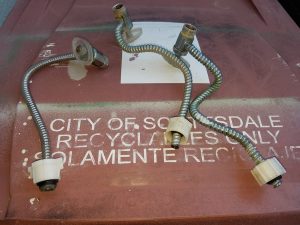
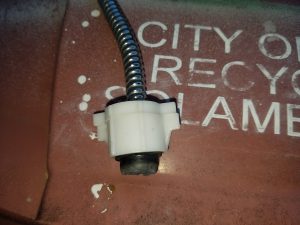
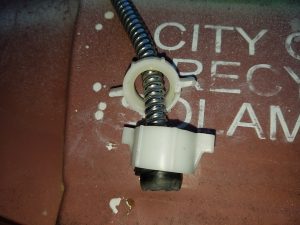
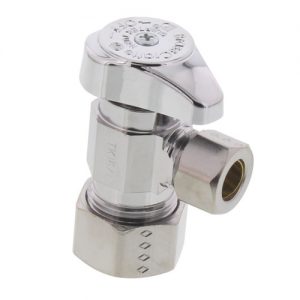
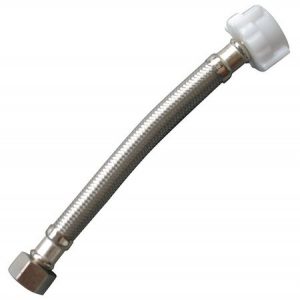
Leave A Comment